Internet connectivity has evolved in so many ways. The past required the use of a cable to connect to a network and access the internet. But, there came the wireless connections (WiFi) and mobile hotspots that let you share mobile data flexibly. On second thought, you may be wondering what a mobile hotspot even is? How does it work exactly? And is there a way to use it without needing to use cellular data? Find out the answers to these questions below.
What Is Mobile Hotspot?
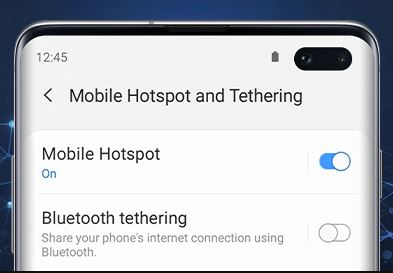
Gone are the days when internet connectivity required cable networks. Today, you can even use your own smartphone as an access point, allowing other users to connect to the internet by sharing your cellular data. This is known as a mobile hotspot.
Simply put, it is an ad hoc wireless access point that allows your smartphone to share its cellular data with other devices. It’s also known as a portable hotspot or, more colloquially, tethering. When you turn on your smartphone’s mobile hotspot or tethering capability, other devices can connect to your hotspot and use your cellular data to surf the internet.
Of course, this means they will also drain your data, thereby increasing your data charges. This is one of the reasons why some people get blindsided by their cell phone bills. They forget to turn off their mobile hotspot or accidentally turn it on. The best case to avoid these hefty bills is to subscribe to a mobile hotspot plan that is capable to handle heavy use of mobile data.
How Does Mobile Hotspot Work?
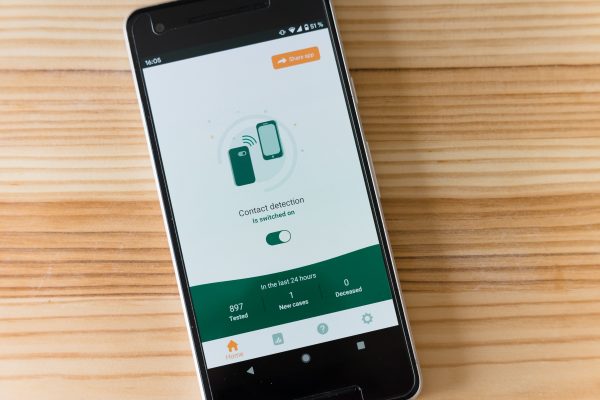
It is simply like portable WiFi, though they don’t necessarily work anywhere and all the time. Mobile hotspot uses 3G or 4G cellular networks, focusing on a data connection so that it can share that connection with other nearby devices via WiFi. It acts like a broadband data source or a small portable router, utilizing the 802.11ac or 802.11ax protocol. With it, you don’t even need a WiFi card — all you need is a data plan and a signal.
Any device with WiFi capabilities can then connect to this hotspot and access the internet. That includes smartphones, laptops, and tablets. However, a smartphone can’t act as a mobile hotspot where cellular data is unavailable since it relies on this connection. So, for example, if you’re in the middle of the woods with no signal, your data won’t work and neither will your mobile hotspot.
You can still utilize your cellular data and mobile hotspot capabilities from outside of the country, though. However, there’s no guarantee that it will work the way you want it to. Additionally, if international access isn’t included in your plan, you will need to face extra charges on your monthly bill.
How Much Data Does Mobile Hotspot Use?
There is no all-encompassing amount of data mobile hotspots use. The amount highly depends on the frequency and nature of use. For instance, heavy video streaming may void your mobile data much faster than browsing on the web. As such, you can easily come to the conclusion that the activity directly influences the amount of data you consume. This includes activities on other devices that are connected to your mobile hotspot as well. Generally speaking, the more devices are connected to your hotspot, the faster you consume data.
While there is no standard amount of data that mobile hotspots use, you can generally gauge how much you’re consuming based on what apps you’re using. Take a look at the table below for guidance:
| Activity | Data Per Hour |
|---|---|
| Web browsing | About 60 MB |
| Less than 1 MB | |
| About 80 MB | |
| About 720 MB | |
| YouTube | About 300 MB |
| Spotify and other music streaming apps | Up to 150 MB |
| Netflix | From 250 MB |
| Zoom, Skype, and other high-quality video calling apps | About 810 MB |
There are, of course, different types of mobile plans available depending on your mobile carrier. A lot of unlimited phone plans like those of Sprint or Verizon already come with mobile hotspot included, though they rarely come with unlimited hotspot. If you find that you quickly go through your data in less than a month, you may want to consider upgrading your plan or buying an additional data allowance.
On the other hand, some carriers offer mobile hotspot plans, which consist of a data allowance for your mobile hotspot and a separate overall data allowance. These plans offer hotspot data limits ranging from 20 GB to 100 GB every month. After reaching your data limit, your speed will automatically slow down. Most carriers offer you a way to track your data usage, too.
How to Set up Mobile Hotspot
Setting up your mobile hotspot is as easy as pie. It involves very few steps that you can complete in no time. Some smartphones even allow you to create a shortcut right on your notifications panel so that you can quickly turn it on and off. If you don’t have that option, though, follow the instructions below for Android users.
How to Set up Mobile Hotspot on Android
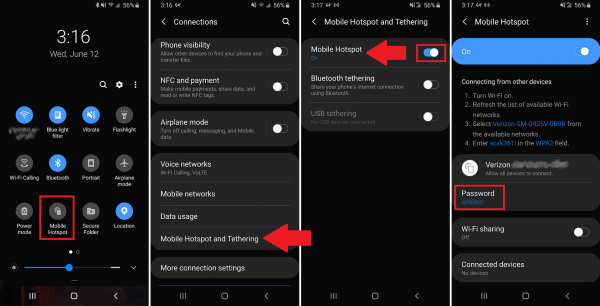
Here’s how to turn on (and off) the mobile hotspot on Android devices:
- Open the Settings app on your device.
- Tap the Connections option (may be listed as Network & Internet).
- Look for Mobile Hotspot and Tethering and tap on that.
- Toggle the Mobile Hotspot switch to the on position.
This is also where you can change the settings of your mobile hotspot. To do that, just tap on Mobile Hotspot. From there, you can change the name of your hotspot as well as the password that other devices must input in order to share your data connection.
How to Set up Mobile Hotspot on Apple

Here’s how to turn on (and off) the mobile hotspot on Apple devices:
- Go to Settings.
- Tap on Cellular (or Personal Hotspot).
- Toggle the slider of Allow Others to Join to the on position.
How to Use Mobile Hotspot without Using Data
While handy, a mobile hotspot does come with downsides. A common problem many smartphone users have is eating up all their data because of a mobile hotspot. When mobile hotspot or tethering is turned on, data is more easily consumed. This is due to the number of devices connected to the hotspot as well as the nature of usage. But, is there actually a way to use a mobile hotspot without using data?
In a word, yes. There’s a feature called WiFi tethering that basically does the same thing. It converts your smartphone into an internet router. The best part is, you can do this to your old smartphone, too. That means you don’t have to waste either data or battery just to use a mobile hotspot. Most older phones can do this, but you’ll have to check first.
Here’s how you can use a mobile hotspot even without a data plan:
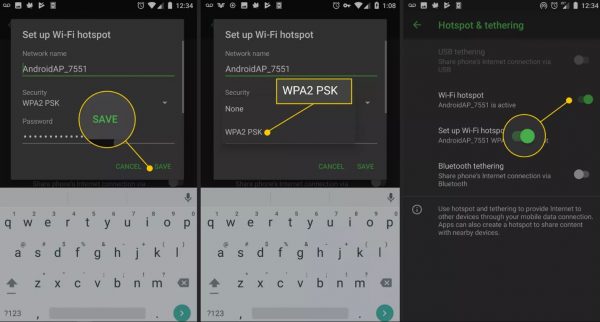
- Open the Settings app.
- Tap on the Wireless & Networks option.
- Search for the Portable Wi-Fi Hotspot option.
- Tap on the button next to that option to turn it on.
- Using a different device, look for the Wi-Fi access point, or simply turn on the Wi-Fi to scan for any wireless networks nearby.
- Tap on the name of the other device’s wireless connection and enter the password.
The Settings app is also where you can change the settings of your Wi-Fi hotspot. As previously mentioned, you can change the password to limit the number of devices connected. Once turned on, the Portable Wi-Fi Hotspot option will allow your smartphone to become a wireless access point. In other words, it will now function as a mobile hotspot.
How to Share Mobile Data without Hotspot
If you don’t want to turn it on, you can just as easily share your data with nearby devices using other means. For one thing, you can use the instructions above (for WiFi hotspot), but other options also exist. Let’s go through each option below.
How to Share Mobile Data Using a USB
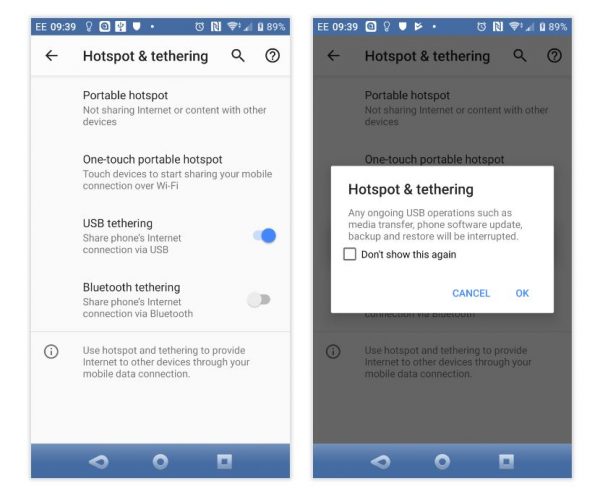
Another way you can set up your mobile hotspot is by making use of a USB. Not all Android devices support this, though, so bear that in mind.
Here’s how to share mobile data using a USB on Android:
- Connect your Android phone to your computer using the USB that comes with the device.
- Wait for your computer to recognize the device and process the connection.
- Open the Settings app on your Android device.
- Tap the Connections option (may be listed as Network & Internet).
- Look for Mobile Hotspot and Tethering and tap on that.
- Toggle the USB Tethering switch to the on position.
You can also use the same basic process to enable mobile data sharing on your iPhone or iPad. However, there’s an extra step where you’ll need to confirm an alert asking you whether to “Trust This Computer?” Simply tap on Trust to confirm.
How to Share Mobile Data Using Bluetooth
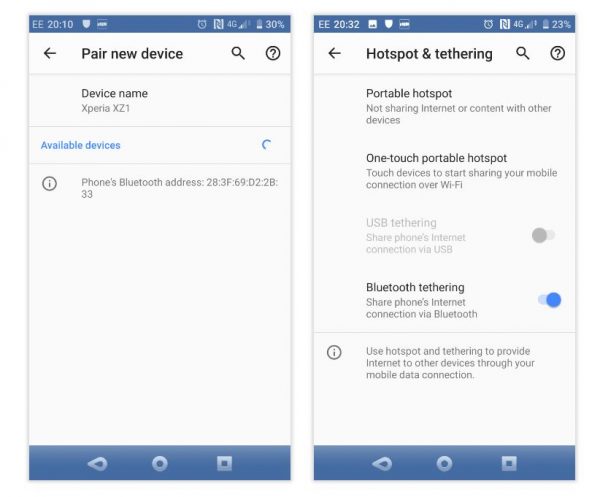
You can also share your data using Bluetooth, though this option is much slower compared to the USB version.
Here’s how to turn on mobile data sharing using Bluetooth on Android:
- Open the Settings app on your Android device.
- Tap the Connections option (may be listed as Network & Internet).
- Look for Mobile Hotspot and Tethering and tap on that.
- Toggle the Bluetooth Tethering switch to the on position.
Here’s how to turn on mobile data sharing using Bluetooth on Apple (which requires the latest version of iOS):
- Turn on Personal Hotspot by going to Settings > Personal Hotspot.
- Restart your Apple device as well as the other device that will connect to the hotspot.
- Go to Settings > General > Reset.
- Tap Reset Network Settings.
How to Share Mobile Data Using a Third-Party App
As with many things, there’s a third-party app you can use on your Android device to set up a mobile hotspot. This is usually the best option for older Android phones that don’t have the hotspot or tethering feature. There are many apps you can choose from on the Google Play Store, such as Portable Wi-Fi and PdaNet+.
Why Is Your Mobile Hotspot So Slow?
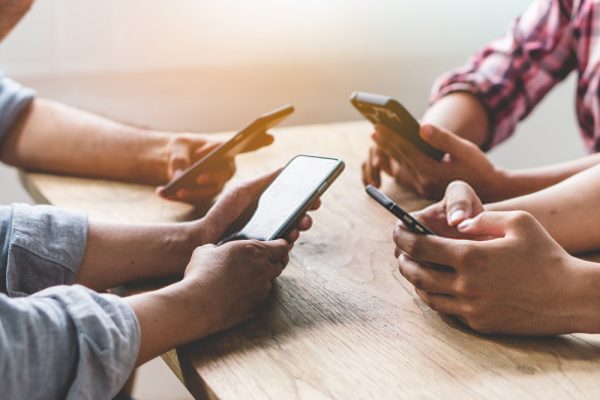
You may notice your mobile hotspot lagging from time to time or getting significantly slower. There are a number of possible reasons why this is happening, such as:
1. Protective Case
Though it may seem like a ridiculous idea, your phone’s protective case could be the reason why your mobile hotspot is slowing down. Many users, especially iPhone users, have reported an increase in speed after taking their protective case off. Thicker cases like those from Otterbox can block the signal, but some users have found that even thinner cases can hinder connectivity. The simple solution to this is to take off your phone’s protective casing while your mobile hotspot is on. In doing so, you can take advantage of faster internet speeds.
2. Too Many Devices
When too many devices are connected to the same WiFi network, the internet speed tends to slow down. The same idea applies to mobile hotspots. When there are too many devices connected to the hotspot, you’ll notice a decrease in internet speed. The answer to this problem is to simply disconnect some of the devices, especially ones that aren’t even using the internet in the first place.
3. Carrier Problems
Another possible reason why your mobile hotspot has slowed is due to issues with your carrier. If your cell carrier is having problems with their service, it may affect you and your mobile hotspot capabilities, too. Unfortunately, if the problem lies with your provider, you can’t really do anything except wait or find a different connection. Check with your carrier to see when they can fix the issue.
4 Poor Signal
Mobile hotspots are only as strong as your cellular signal. Therefore, if there aren’t any cell towers nearby or you’re just in a dead zone, you’re out of luck. This usually happens when you’re in a remote area, like the woods or in the middle of nowhere. An easy fix is to go to a more urban area where cell towers abound. If you live in a place where the signal is naturally poor, consider switching to a different carrier with a stronger presence in your area. Check out your cellular coverage here.
5. Out of Data
When you consume all of your data, your internet speed will naturally reduce speed, thereby dragging your mobile hotspot down with it. A lot of carriers do this so that you don’t go over your data limit. If you want more data, you can buy more. However, some plans allow you to go beyond your limit without slowing down, but you’ll notice an increase in your monthly bill.
How to Make Mobile Hotspot Faster
Everyone wants faster internet nowadays, and no one wants to wait 30 seconds for a web page to load. Here are some ways you can make your mobile hotspot connection faster:
- Location Change. Because mobile hotspots rely on a cell signal, you need to find a place where the signal is at its strongest. Try every room and corner in your house to see where the internet is the quickest. Alternatively, simply placing your phone next to a window can help.
- Disconnect from Charger. Sometimes, charging your phone while the mobile hotspot is on can slow down the internet speed. Consider unplugging from your charger or just using the hotspot once you have a full battery.
- Close Background Apps. Any apps running in the background can significantly weigh down your mobile hotspot speed.
- Reset Network Settings. You can also try to reset your network settings on your phone to get a better connection.
- Use a Booster. A booster is a device that can amplify your cell signal and give you faster mobile hotspot internet connectivity. You can buy signal boosters online.
A Convenient Solution
The advent of mobile hotspots has certainly paved the way for modern internet connections. With just a smartphone, a data plan, and a stable cell signal, you can share your mobile data with other devices via WiFi. The setup is simple, the issues are remediable, and the speed can easily be made quicker. All in all, there’s no denying that a mobile hotspot is the most convenient solution when you lack a stable WiFi connection.
